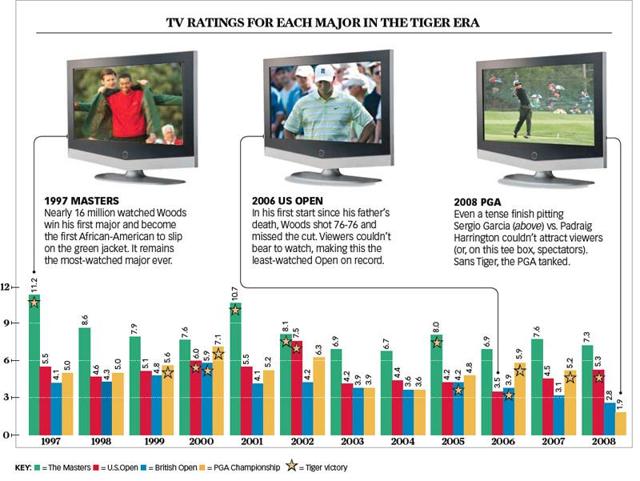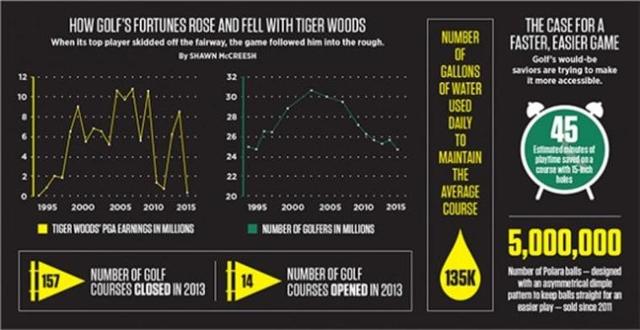The game of golf and its popularity
Many say that golf is a rich man's sport, because of the expense required to play the game. Green fees, golf clubs, balls and lessons are costly and not as affordable as other sports. But everything began to change in late 1990s, when Tiger Woods stormed, not only golf, but also the entire world of sports. Tiger drew millions of new fans and young players to the game both in the U.S. and around the globe that had never been witnessed before. From 1995 to 2005, golf gained unprecedented popularity, and a lot of it had to do with Tiger's dominance of the game, or the "Tiger Effect".
(Source: CBS Sports)

However, the 2008 financial crisis, combined with Tiger's affairs reported in 2009, did not bring the game any good. TV ratings saw significant decline when Tiger was not participating in tournaments, popularity of golf started to fade and golf courses closed as players and admirers shifted away.
(Source: Golf Business Monitor)
Golf Industry in 2016 and beyond
Lately, there has been several encouraging news for golf. For the first time since 2012, number of total rounds played increased in 2015 and number of new players to the game also picked up. Forbes recently conducted an interview with industry leaders on the future of the industry and pointed out a couple more positive trends including increase in audiences, TV viewership and participation in PGA junior league golf, as well as golf's return to the Olympics, which received really impressive viewings globally.
In addition, post-Tiger era has already started with the arrival of young American stars such as Jordan Spieth and Patrick Reed, aged 23 and 26 respectively. Spieth, the Under Armour (UA) star, and Reed led the USA to a recent Ryder Cup
